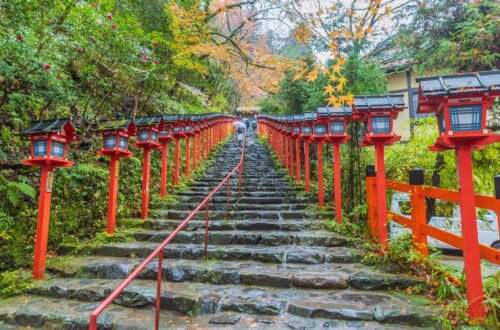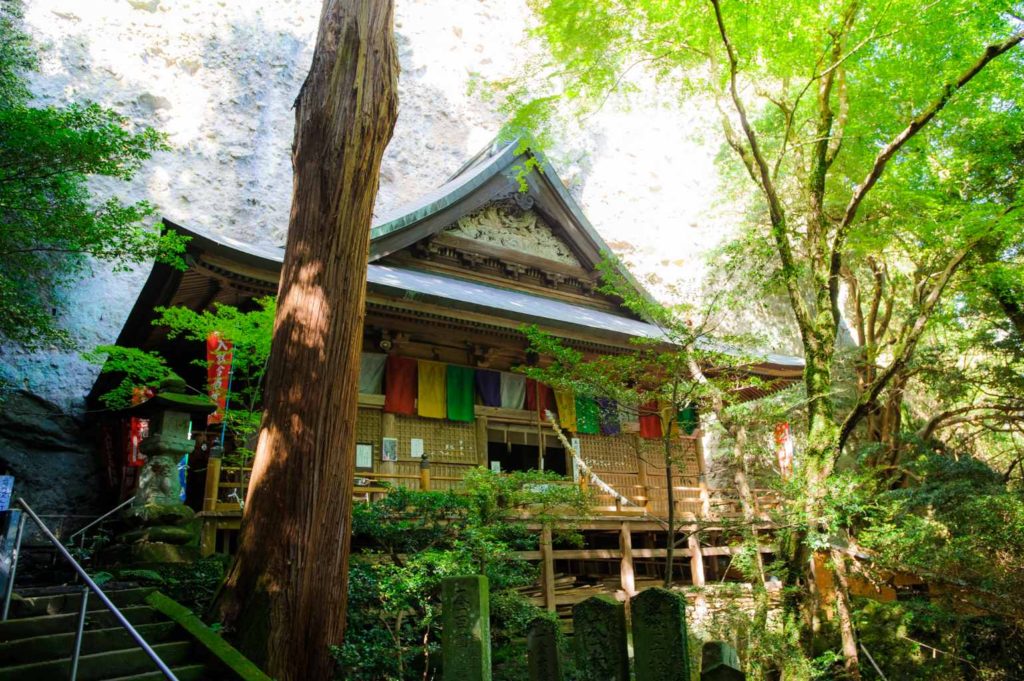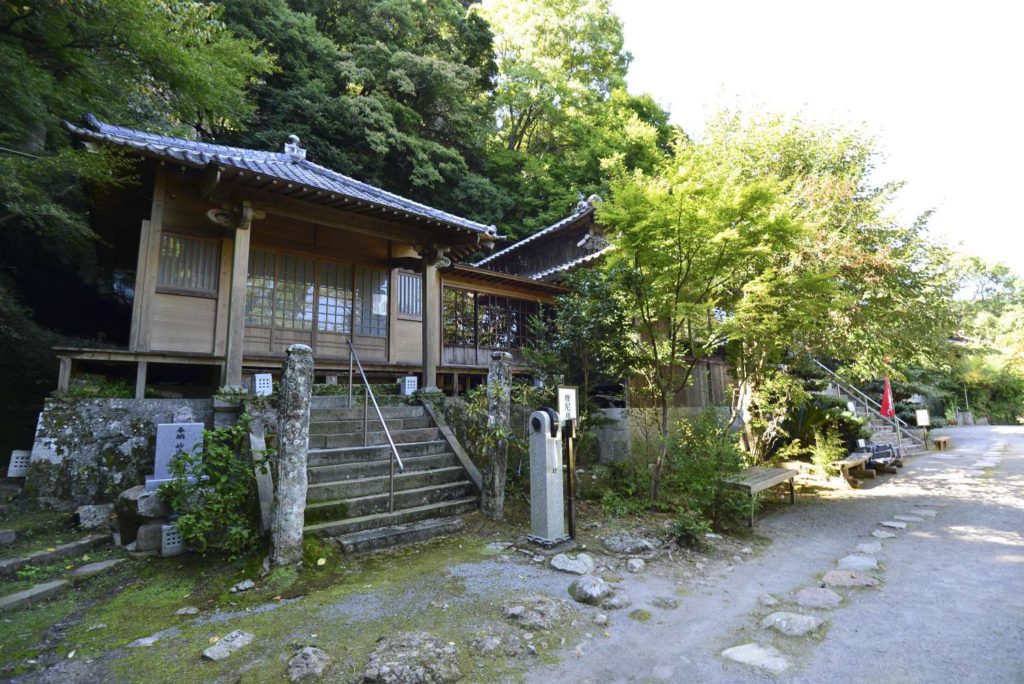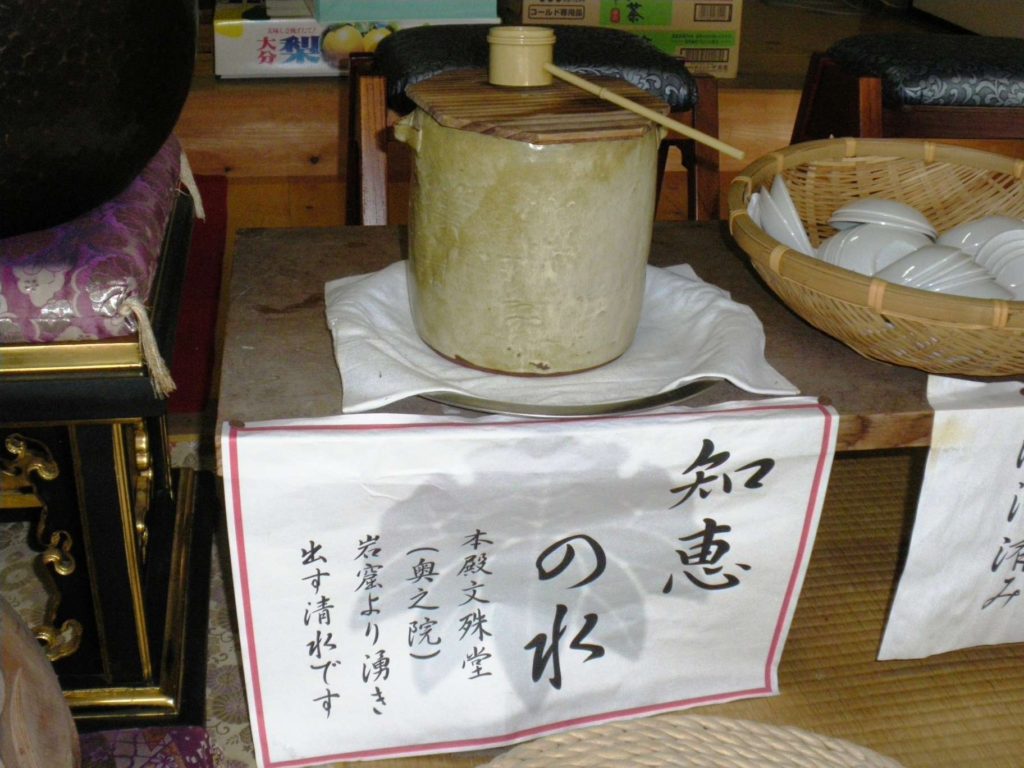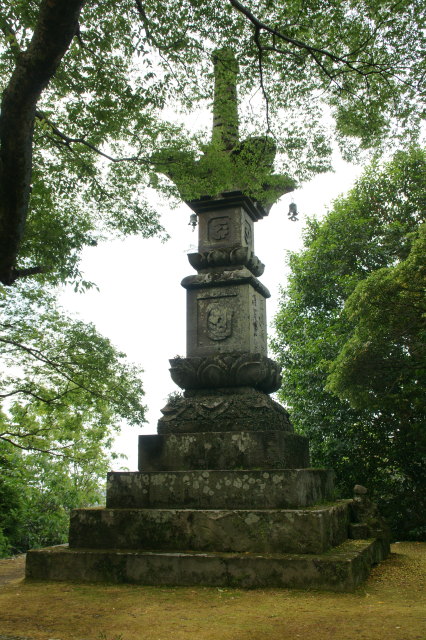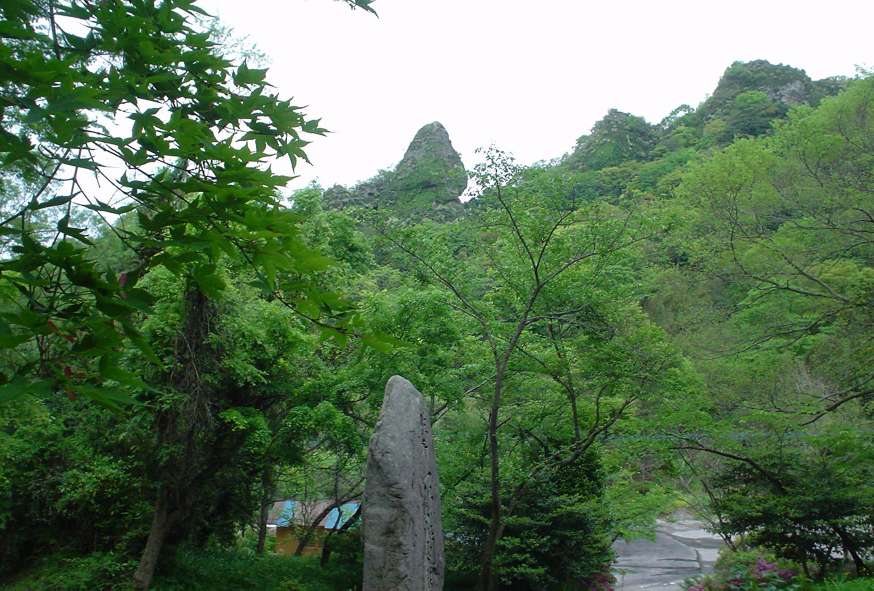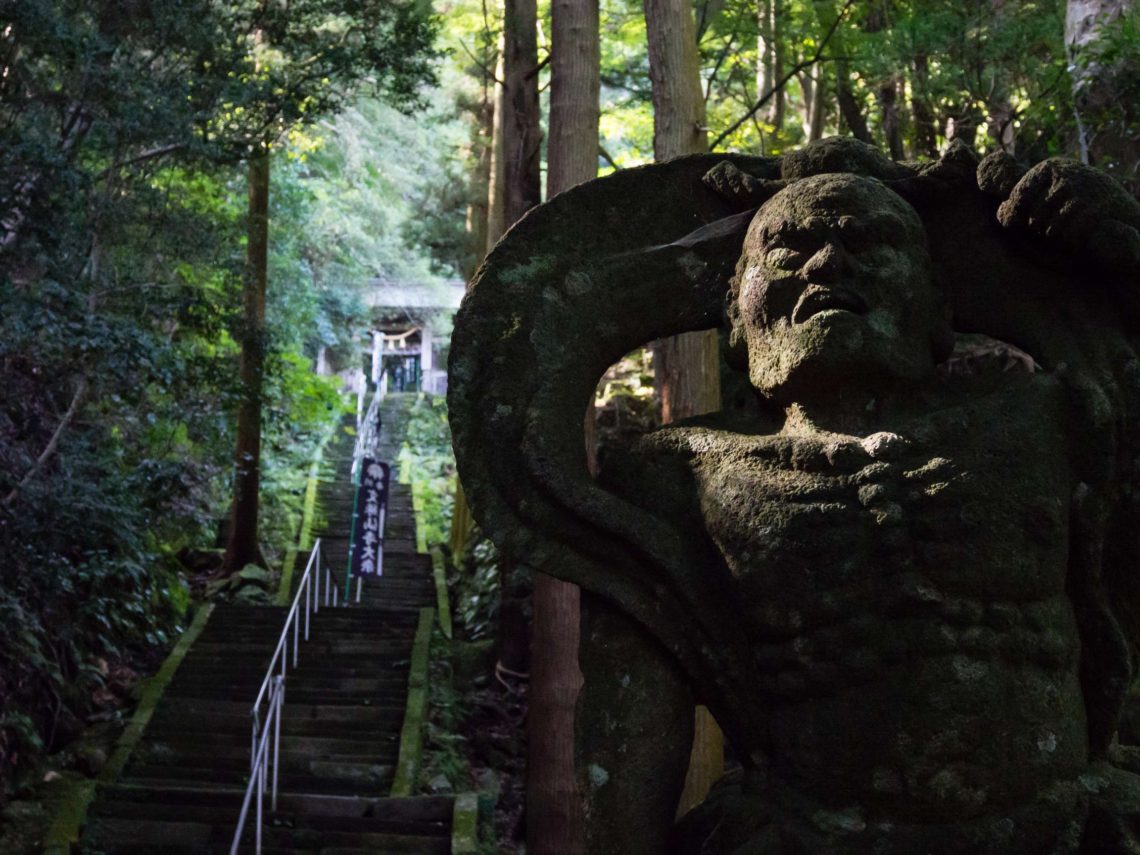
Monjusenji Temple – The Ultimate Spiritual Wisdom Spot of Kunisaki
Have you ever heard of the temple of wisdom known as Monjusenji (文殊仙寺)? This little mountain temple located in the Kunisaki Peninsula (国東半島) of Oita prefecture (大分県), is an off the beaten track destination that only the locals or the most die-hard explorers would have heard off. In fact, the temple is considered the go-to spot among meditation enthusiasts and nature lovers who wish to explore forest bathing. Let’s explore this enchanting spiritual spot deeper, shall we?
Table of Contents
History of Monjusenji Temple and How It is Related to Wisdom
Monjusenji (文殊仙寺), just like the Kunisaki peninsula’s poster boy, Futagoji (両子寺) was also built during the inception of the Rokugo Manzan (六郷満山). Unlike most other temples within the peninsula that were founded by the legendary monk Ninmon (仁聞), Monjusenji has the distinction of being founded by En-no-Gyoja (pronounced En-no-Gyōja/En-no-Gyouja/役行者) in AD 648. En-no-Gyoja is also the founding father of Shugendo (pronounced Shugendō/Shugendou/修験道), a practice involving finding superpowers from trekking through steep mountain ranges.
In fact, the practice of Shugendo itself influenced the temple’s secluded location. The principle deity of the temple is the Boddhissatva Manjushri (Monju-Bosatsu/文殊菩薩 in Japanese); which was decided by En-no-Gyoja himself whom began worshipping the deity during his spiritual adventures in Mt Wutai (五台山), China. The temple became a training ground for monks, as well as a worship place for the Nomi clan (能見家) of Kitsuki (杵築).
Because Manjushri is strongly associated with wisdom, today the temple is a go-to spot for those seeking further wisdom. For a fun fact, there is also the saying San-nin yoreba Monju-no-chie (三人寄れば文殊の知恵), which means having three people is better than a single person’s wisdom. Some of these include moms who bring their new-born children as well as hardcore students who want to pass their examinations.
Exploring Monjusenji Temple
Monjusenji was in fact the very first Rokugo Manzan temple which I have visited. Much like many of the temples in the Kunisaki Peninsula, Monjusenji (文殊仙寺) is nestled deep within the forest. The complex is surrounded by towering ancient trees, together with a long stone staircase leading up to the main hall. Because of this, it is the perfect place for those who enjoy forest bathing and also meditation. While it it small in size, it makes up for it with its tranquility and beautiful nature. Check out the below links to explore the temple’s complex.
- Firstly, check out some of these important points before heading up to the temple grounds.
- Explore the forest along the way, together with these little attractions here.
- Next, check out this fascinating tradition that has been passed down for generations, as well as the temple’s founder himself.
- Check out the treasures of the temple, including these completely off-the-radar attractions.
- Words alone can’t convince you enough? Check out this captivating video of the temple.
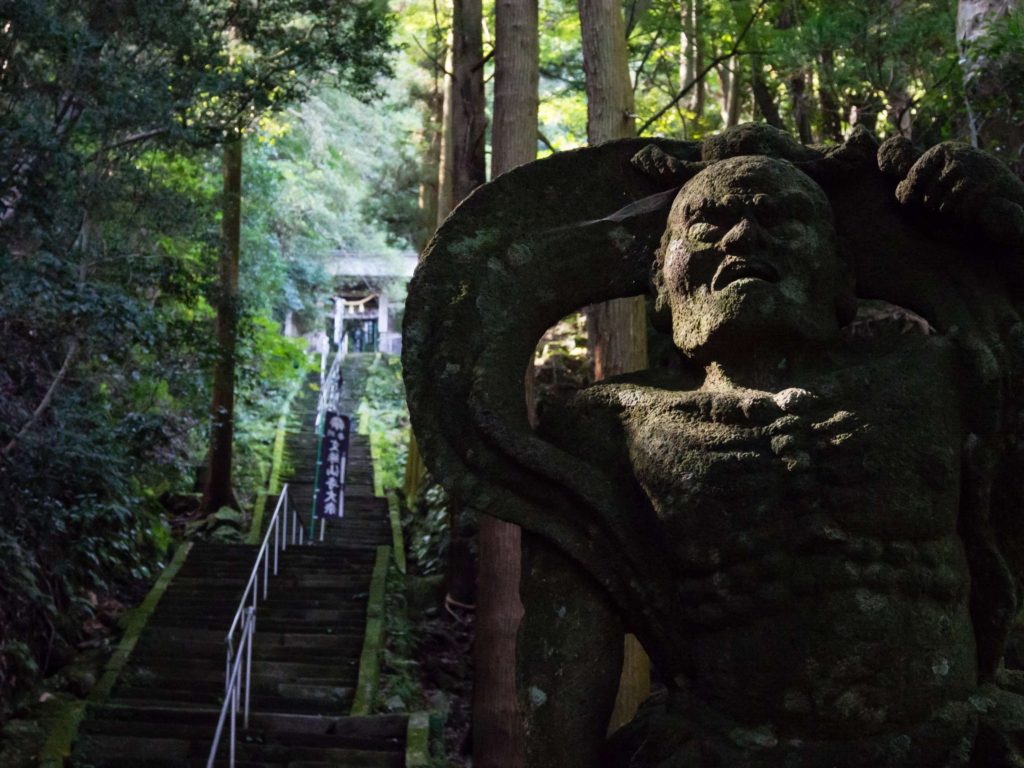
Entering Monjusenji
Right off the bat we are greeted by a small signboard which explains in summary of the temple’s history. More importantly, take note of the word in the sign which is 自然百選 (Shizen Hyakusen); translates as Japan’s top 100 nature spots. This means that this site is a local go-to spot among the nature lovers. For a fun fact, Japan has a tendency to create their own tier list for everything, and forests are no exception.
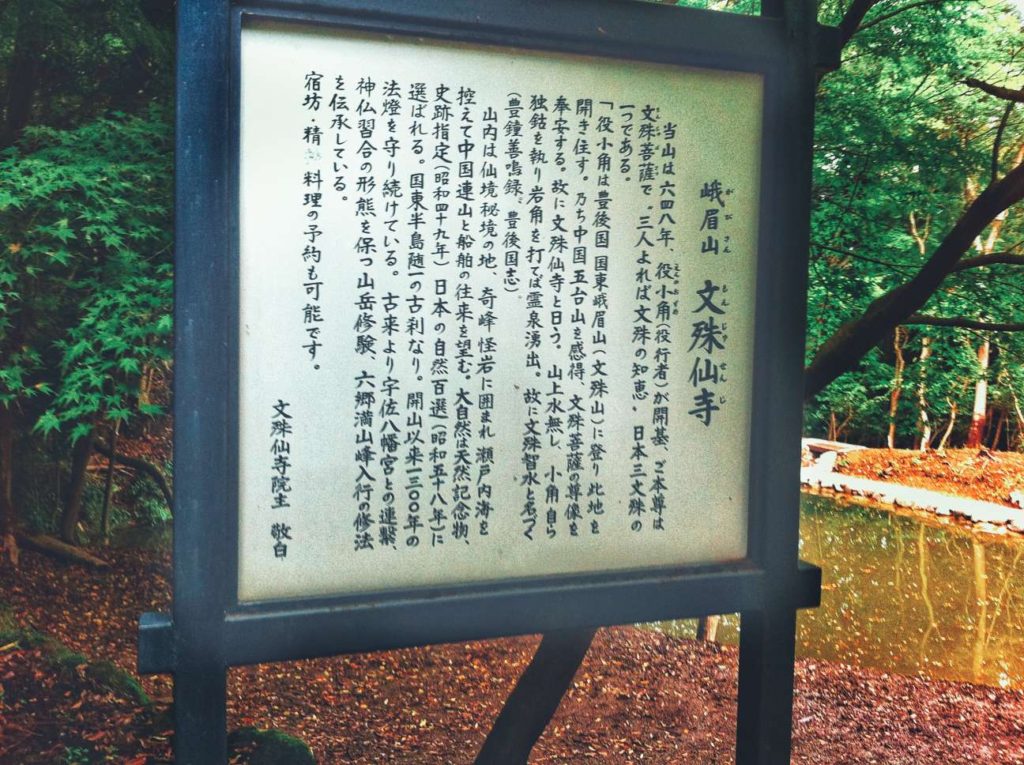
In order to reach the temple, we will need to hike up a total of 300 stairs up to the mountain. Yep, you heard me right. The main temple ground is connected only by this lane of stairs which passes through the lush and deep forest.
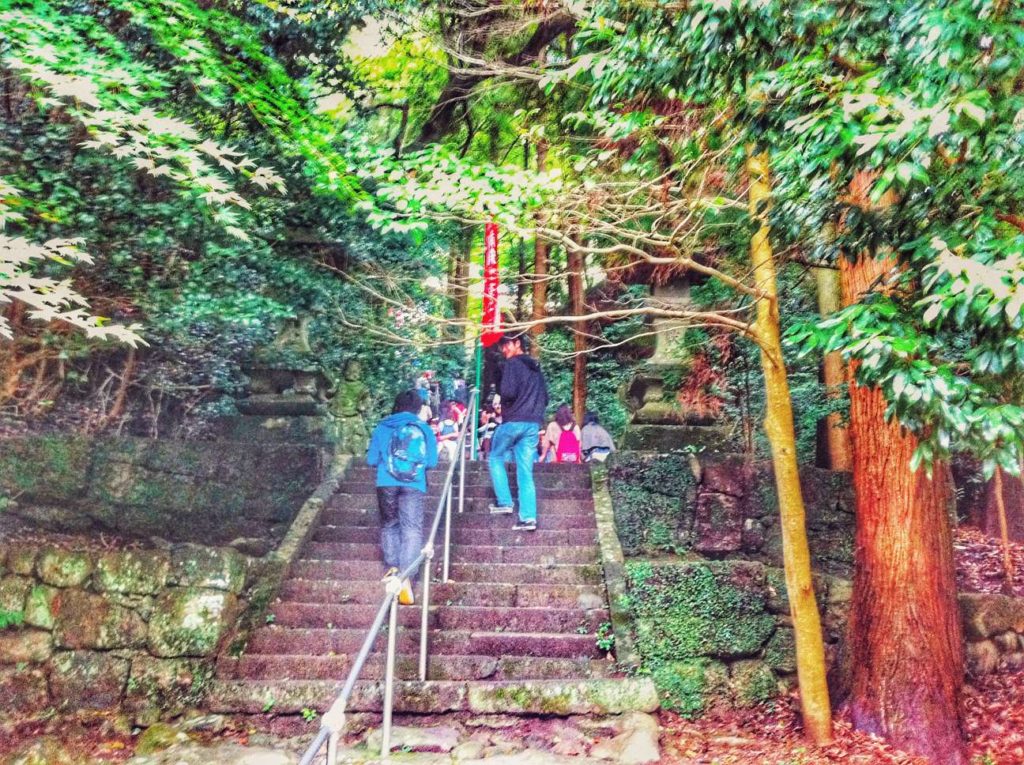
Because of the long hike, it is advisable to wear some comfortable trekking shoes when visiting the temple. Wear long pants as well as bring along mosquito repellents too if you are afraid of mosquitoes.
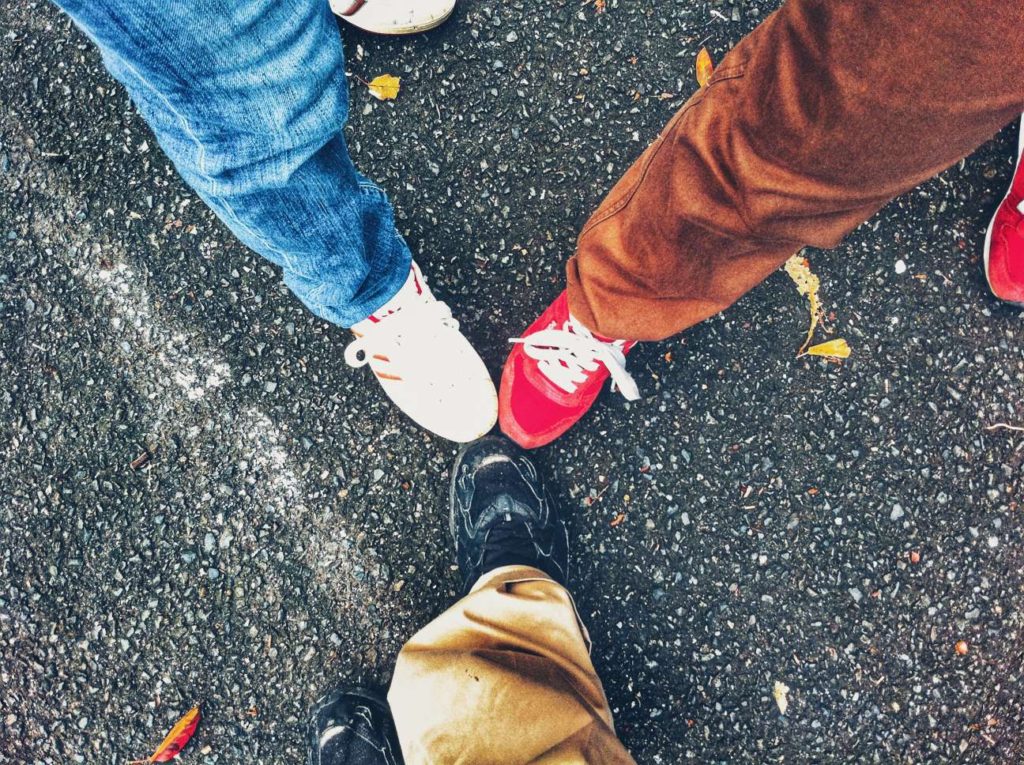
Hiking Along The Way
As we walk along the stone staircase, be sure to take your time to admire the towering trees. These cedar and zelkova trees are deemed as treasures by the locals and have existed for centuries. Not only do they provide a nice shade from the sun (especially if you are here during summer), but they also create for some spectacular nature sceneries.
We were simply at awe at the majesty and the size of these ancient trees; which have overseen the forest for centuries; all while being accompanied by the crickets chirping. Walking along these trees did felt as if they are welcoming us to this sacred temple that is hardly visited by outsiders. It is fascinating indeed to imagine what an artistic genius the temple’s founder was, for deciding to establish a temple right in the middle of a forest.
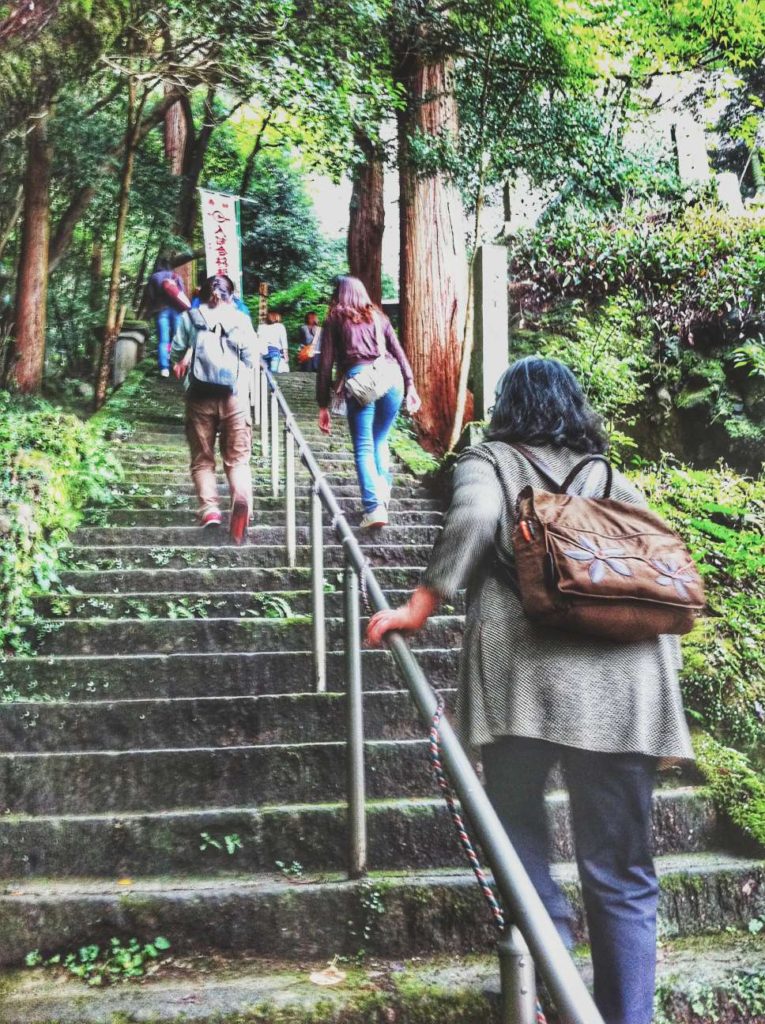
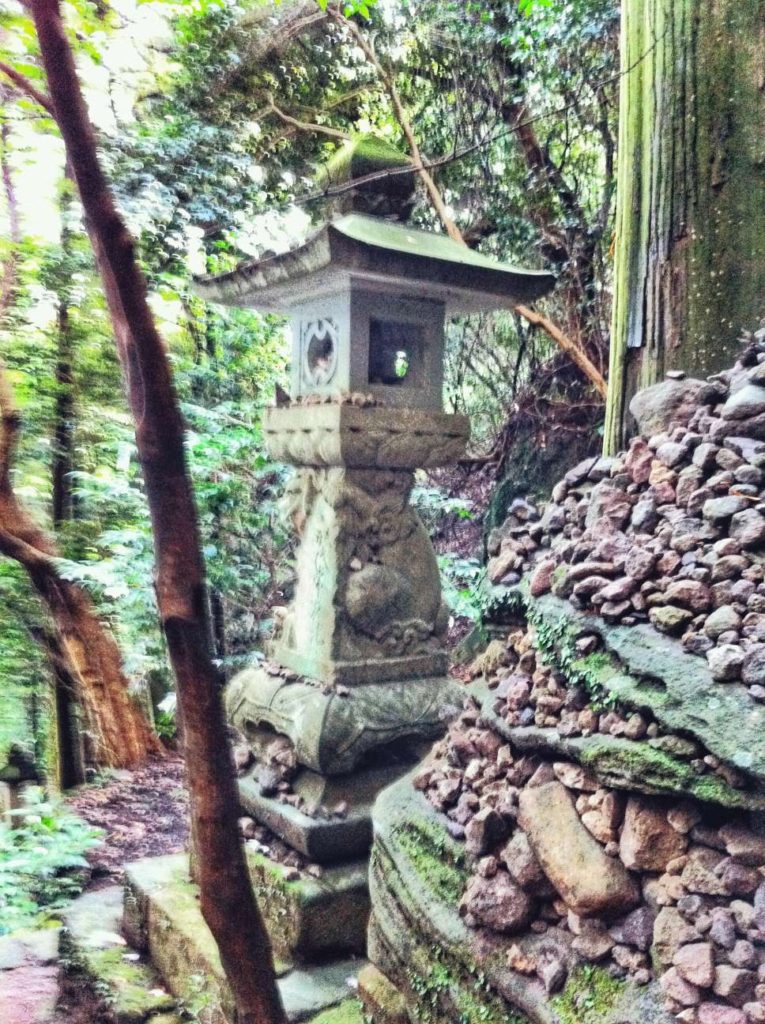
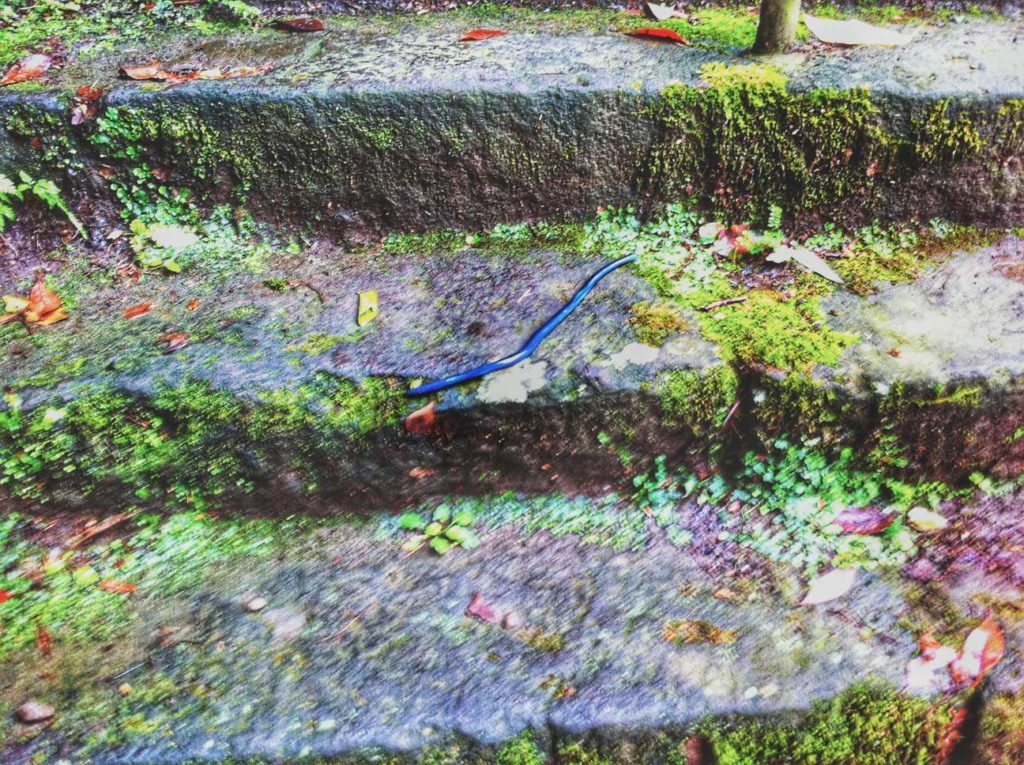

Look Out For These Little Attractions
Additionally, you will also noticed two guardian gentlemen that are guarding the stairs along the way. These are called the Nio guardians (Niou/Niō/仁王), known as Agyo (Agyō/あぎょう/阿形) and Ungyo (Ungyō/うんぎょう/吽形) respectively. One of them has its mouth opened saying ‘Ah’ while the other one has its mouth closed, expressing ‘Uhm’. The reasoning behind this naming is because in Buddhist, they believe ‘Ah’ is the first sound that comes from a baby giving birth. On the other hand, when a person passes away, he/she will close the mouth and say ‘Uhm’. These statues appear often in temple entrances in Japan; including the nearby Futagoji (両子寺), serving as guardians (and apparently also to scare off potential robbers back in the old days).
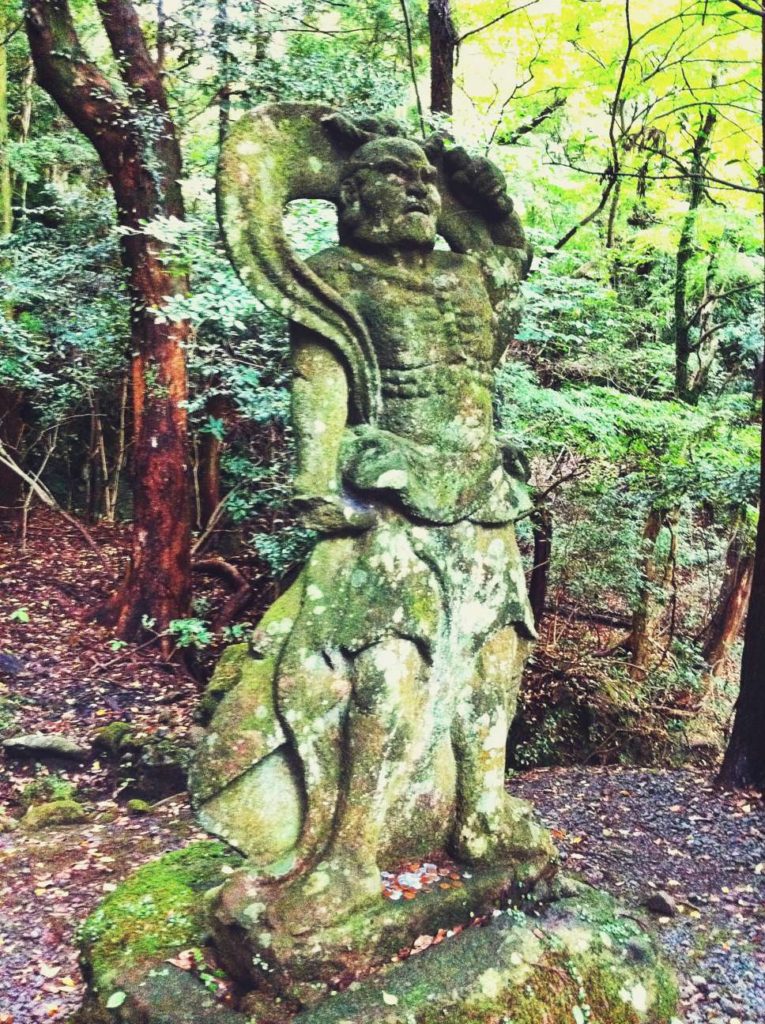
See these little monk-like statues below? These are called arhats (羅漢/rakan), and they are found quite often among Buddhist temples in Japan and China. In Buddhism, arhats are beings that have gained insight of the true nature of existence and also achieved spiritual enlightenment or nirvana (涅槃/nehan in Japanaese). These statues as a metaphor for such spiritual enlightenment; which Buddhism often emphasizes heavily.
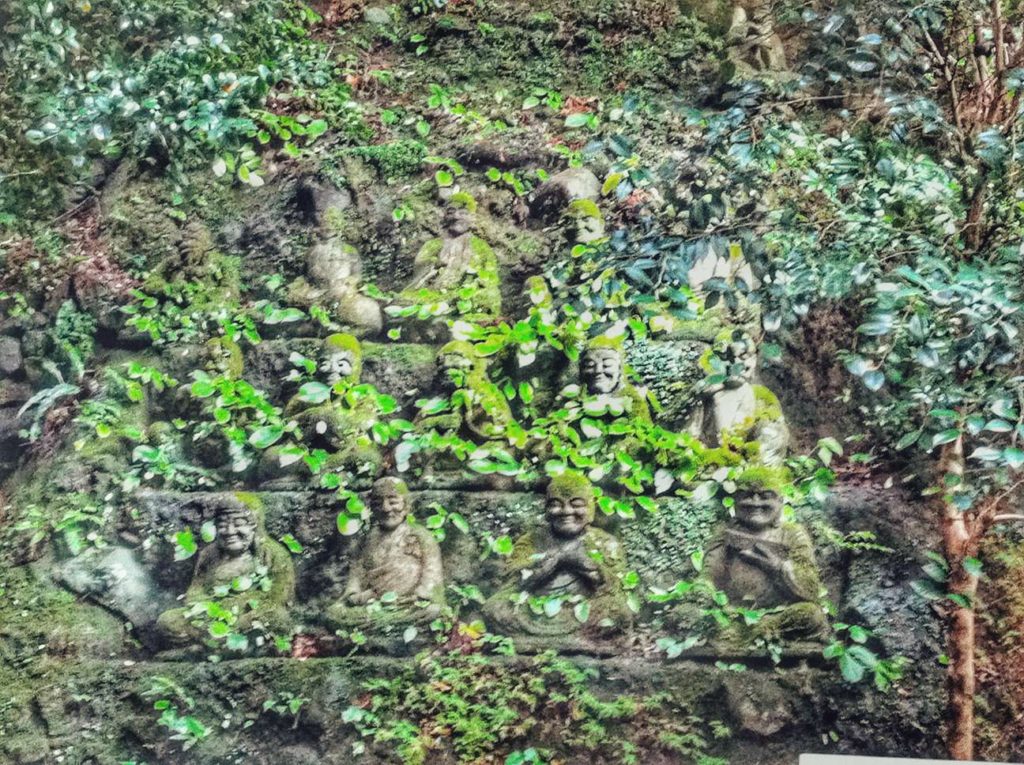
Arriving at the Main Hall
After our little hiking adventure, we finally arrive at the temple’s main hall. The hall itself is located right next to a cliff and constructed out of wood. It is also where the prayers and ceremonies are being held. In particular, Gomataki rituals (護摩焚き) are being held in this hall on the 25th of every month; a tradition that has been passed down for generations over 1,300 years in this temple. The Gomataki (護摩焚き) rituals originate from the Sanskrit word of Homa; which involves the burning of wooden fragrance sticks as an offering to the deities.
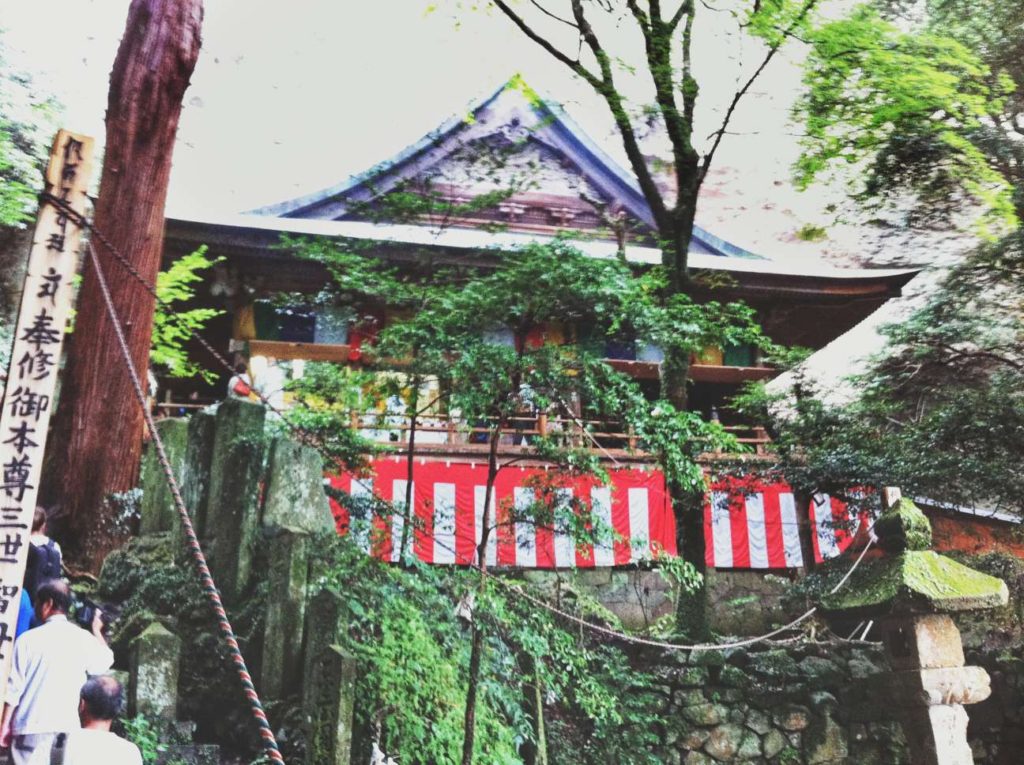
According to Buddhism, the fragrance sticks represent the earthly desires of human while the fire symbolises wisdom. The ritual itself serves as a metaphor of vanquishing our earthly desires in favour of true wisdom. We were lucky enough to get to witness the ceremony itself upon arrival.
During the ceremony, a monk will first start burning the woods while reading the sutra (Buddhism scriptures) with passion. There is certainly a rhythm to this ritual; as the chanting became increasingly passionate, so to does the fire’s intensity. Even from afar, I could feel the cold sweat dripping down my body caused by the intensity of the ritual itself. Needless to say, when the ritual ended, there was a sigh of relief among us.
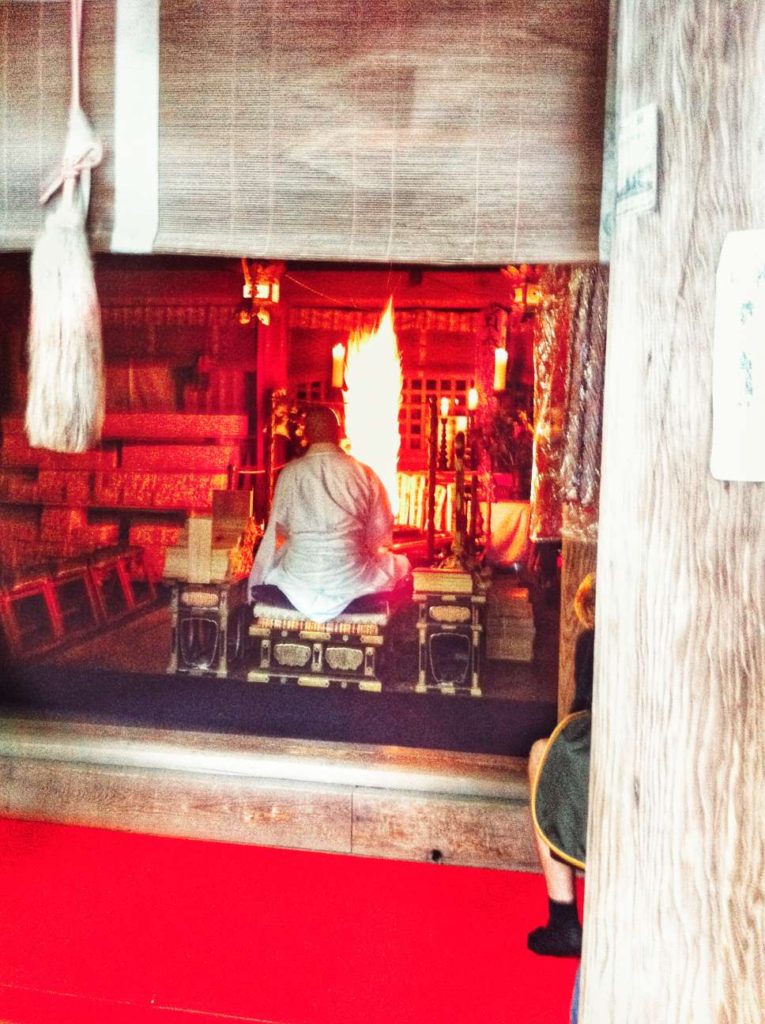
Meet En-no-Gyoja Himself
Be sure to take some time to explore the surroundings of the main hall, especially the below statue. This is En-no-Gyoja (役行者) himself, the very founder of this temple himself. Easily recognisable with the staff he is holding, he is accompanied by several Buddha statues; including a small statue of Fudo-Myoo (不動明王), the vanquisher of evil in Buddhism right in front of him. The mixture of statues together here is rather interesting, as it enforces the fundamentals of Rokugo Manzan. In this case, we can clearly see the assimilation between the mountain worship practice as well as Buddhism.
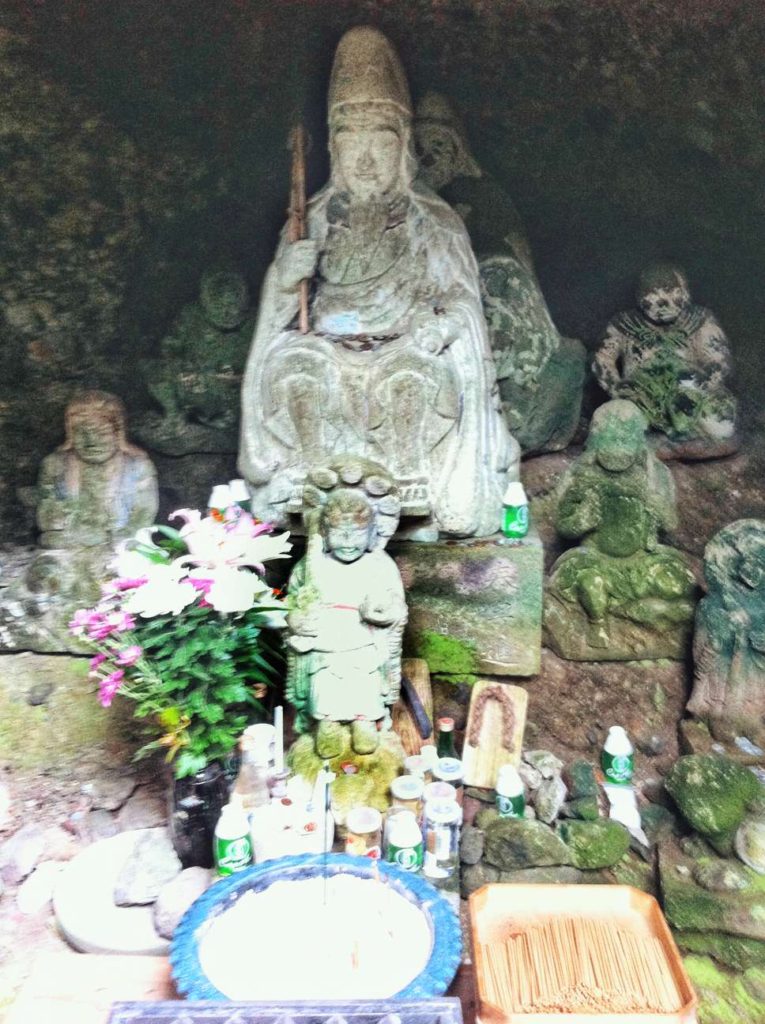
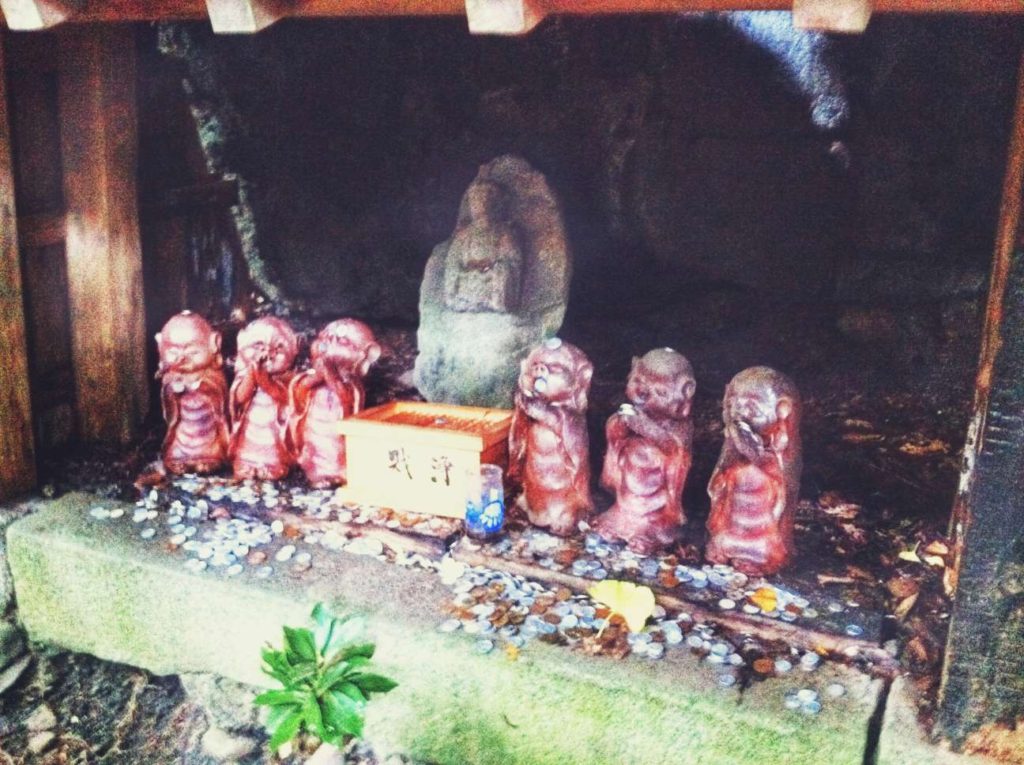
Discover the Temple's Prized Treasure
After that fiery experience at the main hall, we then head downwards to the temple’s guest hall. While the hall is rather unspectacular in comparison with other temples, it is where one can discover secret treasure of Monjusenji, the sacred Water of Wisdom (知恵の水/Chie-no-mizu). As a matter of fact, many local students often come here to drink the sacred water in hopes of passing their exams with flying colours.
Inside the building itself is a little and humble tatami (畳) room, featuring a prayer altar as well as other prayer accessories. Upon entering, head slowly towards the main table in front of the table and look for the rustic vase-like container that says ‘知恵の水’ which is the water of wisdom itself. The water itself is freshly collected from the cave near the main hall of the temple. While I certainly did not immediately felt like wisdom just poured into my mind, it is definitely refreshing to have a sip of pure mountain water after our hiking adventure.
Check Out These Hidden Treasures at Monjusenji
Despite the temple’s rather small size, it does boast a few attractions near the guest hall that are deemed as National Treasures. Firstly, there is an ancient giant Belfry gate (鐘楼門/Shuro-mon) that was constructed in AD 1397. On top of it sits a huge bell, where you can climb up and ring the bell. As you ring the bell, listen to the sound of the chimes closely as it echoes resonantly across the serene mountains.
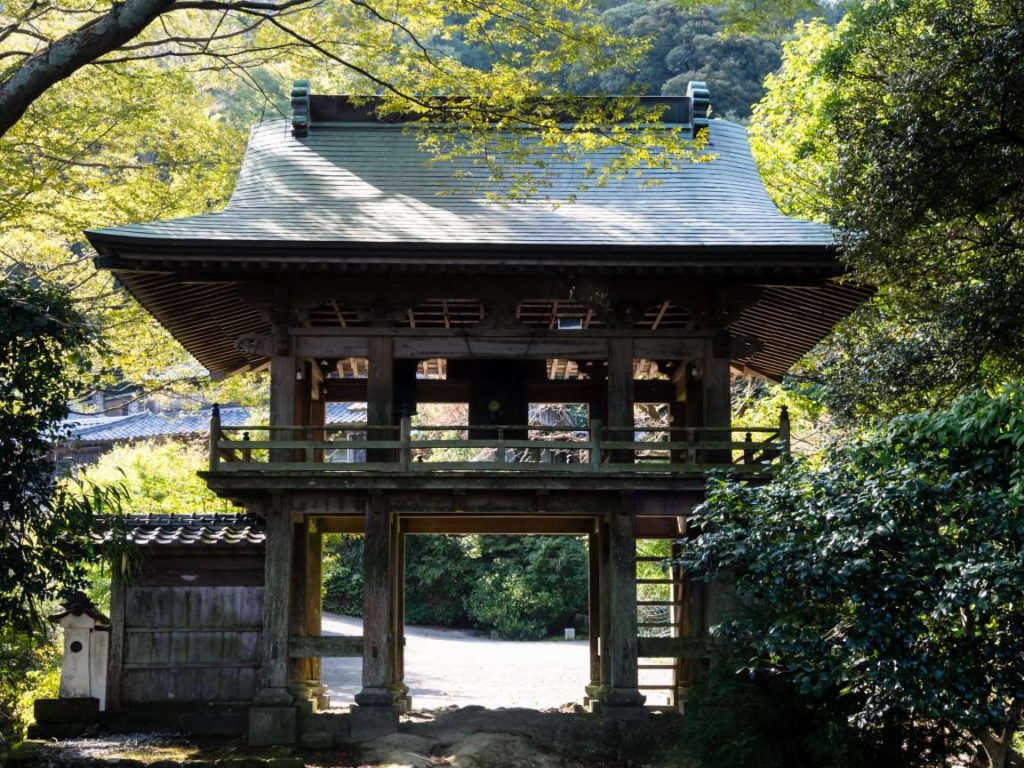
Secondly, there is a sacred tower right next to the edge of a cliff. This tower is the Hokyointo (宝篋印塔), which was built in AD 1833. The Hokyointo usually serves as either a tombstone or a storage for sutras; with an elegant and flowery design that is originated from the Indian stupa. At 9 metres high, this tower is the highest of its kind in Japan. Don’t forget to check out the scenery behind the tower, which features a gorgeous view of the Seto Inland Sea (瀬戸内). And if the weather is clear, you can even get to view the island of Shikoku (四国) as well.
And finally, look out for the ancient 1,000 years old zelkova tree (大欅) nearby the Hokyointo. This tree is a designated Natural Treasure of the prefecture and remains an astounding natural scenic site. In fact, one can observe its longevity simply from its sheer size and massive complex roots. It is truly a testament of how the best hidden beauties lies within the grasp of mother nature. To find the tree, simply look out for the signboard that says 千年大欅 (Sen-nen Oo-keyaki or 1,000 years old zelkova tree).
Exploring Monjusenji Through Video
To describe the serenity and tranquility of Monjusenji by words alone is simply an understatement. TokyoStreetView in Youtube features a high-quality video of it, capturing the captivating sceneries of the temple’s complex. Be sure to check out TokyoStreetView’s channel as well for more amazing videos of hidden gems across Japan.
Getting To and Around Monjusenji
Rent A Car
Similarly to other temples throughout the Kunisaki Peninsula, the recommended way to visit Monjusenji is to rent a car. Despite the sheer number of attractions, public transportation is extremely scarce in this area. All the more reason to consider renting a car from Tocoo to travel and explore the other attractions around the Kunisaki peninsula. In fact, a friend of mine used Tocoo; Japan’s leading rental car website which is reliable and provides a wide selection of cars, ranging from small economical cars to the big family ones with affordable rates.
Are you unsure of getting the necessary license and familiarising with the rules of driving in Japan? Fret not as they provide comprehensive and elaborate guides in their site on what you need to start your driving journey in Japan. Click here to embark on a wonderful journey of driving through the countryside of Japan.
Hire A Taxi
Oita Prefecture Taxi Association does provide taxi services across the prefecture, which you can inquire from their website. Alternatively, if you are proficient in Japanese, consider contacting local taxi companies such as Futaba Taxi directly to make a reservation. Despite this though, do note that taxi fares in Japan can be pricey (Yen 500 – 730 for first 2 kms and subsequently, Yen 80 – 90 yen increase for every additional 300 – 400 meters travelled). Ultimately though, if you are planning to visit the region, renting a car is undeniably the more economical option.
Getting A Wifi
Given the remoteness of the temple as well as the surroundings, public Wi-Fi is undeniably extremely scarce. I would recommend renting a Wi-Fi upon arrival to Japan. Renting a portable Wi-Fi helps you to stay connected, together with other activities such as using Google Maps, researching other hotspots and even Instagramming. All the more convenient while exploring the rural parts of Japan.
Overall Thoughts
Monjusenji is certainly worth the visit, especially if you love mother nature and also if spirituality is your thing. While it lacks in grand-scaled prayer halls or large monuments in contrast with other major temples, it makes up for it with its authentic nature together with its tranquility.
It is important however, to keep in mind that the region itself comprise mainly of villages and mountains. As such, convenient stores and supermarkets are minimal; so its best to stock up on some snacks and drinks (and more importantly, getting a Wi-fi) before heading out.
As such, I would recommend visiting Monjusenji if you:
- Appreciate the peacefulness of the woods and enjoy exploring them.
- Seek to go on a road trip and explore quieter options.
- Love the idea of capturing enchanting photos of the woods and the mountains.
Loving the content here?
Subscribe and get your free hidden gems in Japan bucket list here.


You May Also Like
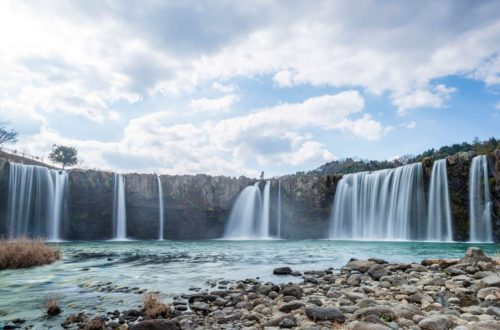
Six Gorgeous Nature Spots to Check Out in Bungoono
May 13, 2022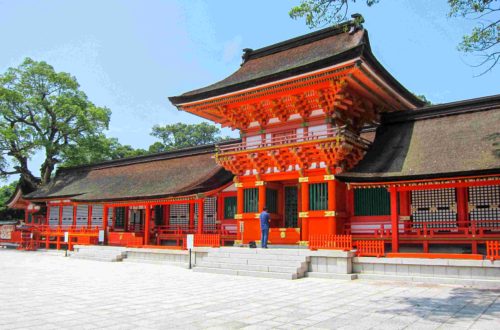
Usa Jingū – A Complete Travel Guide to Japan’s First Hybrid Shrine
May 14, 2021